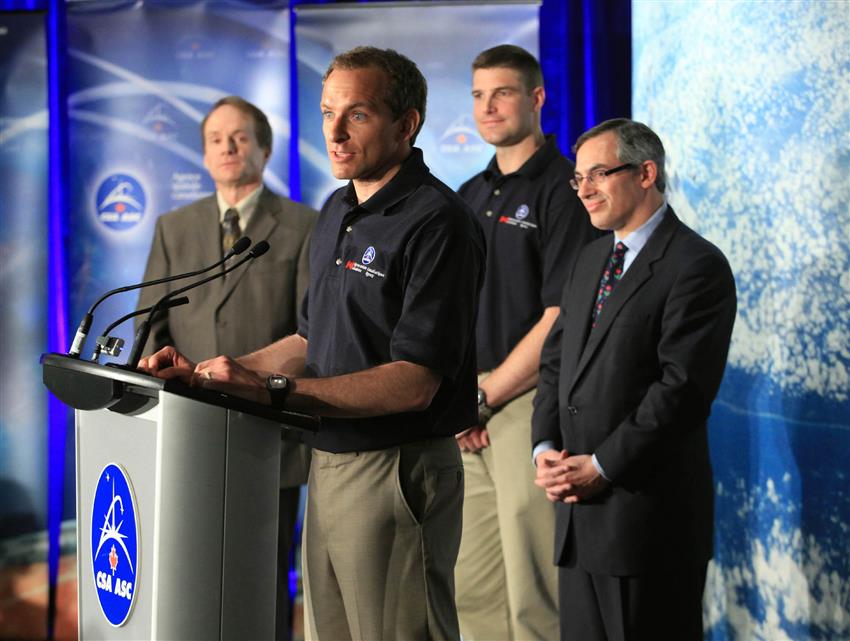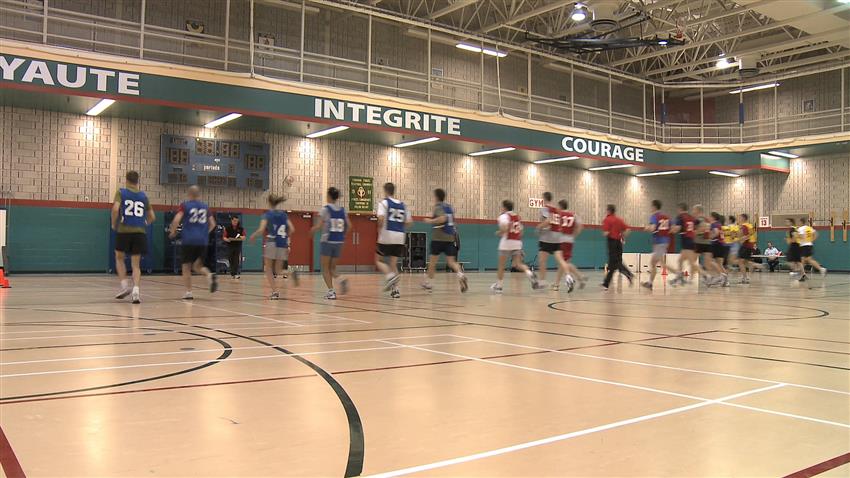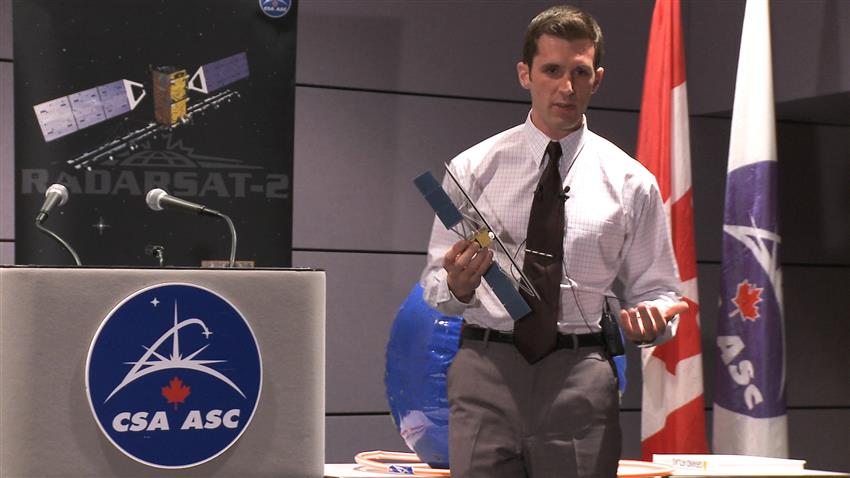2009 Astronaut Recruitment Campaign
In March 2008, for the third time in Canada's space history, the Canadian Space Agency (CSA) began a search for the next generation of space explorers.
Over 5,350 hopefuls of all ages and from all walks of life answered the call. The CSA put their creativity, teamwork skills and physical fitness to the test in order to determine who had the "right stuff" to excel and meet the rigours of training and space flight.
Imagine a hiring process that:
- lasts a year
- is filled with tests centred on potentially hazardous situations
- pushes your physical and psychological limits
That's exactly what contenders vying to become Canadian astronauts had to endure in 2009. Two candidates were selected at the end of the process. Here is a step-by-step overview of this unique selection process.
Watch the final Canadian astronaut candidates as they are put through their paces. (Credit: CSA)
The call goes out
After some of Canada's seasoned astronauts had retired, the time had come to recruit new members.
Canadians at home and abroad were invited to apply electronically from May 22 to June 26, 2008.
Screening
The initial screening process consisted in candidates filling out two elaborate questionnaires that were designed to help identify those who met the basic requirements for being astronauts.
The evaluation panel spent the summer of 2008 filtering out, evaluating and ranking thousands of applications. Their mission was to find strong contenders.
By late October 2008, the rigorous screening process had whittled down the list to just 79 people.
An "interview" unlike any other
The 79 candidates were stationed around the world in places like Continental U.S., Hawaii, France, Sweden, Afghanistan, Germany and Japan.
With the help of Canadian embassies, consulates and military bases, the judges embarked on a three-week marathon of hour-long videoconferences to meet all of the candidates.
What's up, doc?
Forty-four candidates were then invited to undergo medical exams at different Canadian Armed Forces military clinics across the country.
Military flight surgeons conducted physical exams similar to those that jet fighter pilots undergo on a regular basis.
Wild ride
Stamina, physical strength and stress tolerance were the focus of the next phase of the competition, which began in mid-January 2009 for 39 candidates.
Certain characteristics are expected of all astronauts:
- good memory
- reasoning ability
- concentration
- aptitude for spatial orientation
- eye–hand coordination
- manual dexterity
These skills were evaluated by means of written tests and simulations.
The candidates then performed fitness tests and entered the swimming pool to evaluate their:
- endurance
- strength
- tolerance for underwater immersion
- general water proficiency
These are all must-have characteristics for astronauts! Being comfortable in water is vital, as they spend countless hours of their training in the pool, particularly for spacewalks.
By mid-February 2009, just 31 candidates were left in the running. Little did they know that the most demanding tests were yet to come.
"Survival" mode
Space is an extreme and dangerous environment that leaves no room for error. Astronauts need to follow instructions promptly and react proficiently.
To test how quickly and creatively they can act under life-threatening conditions, damage control and hazard training simulations were next in line for the would-be astronauts.
At Survival Systems Training Limited in Dartmouth, Nova Scotia, each candidate was strapped inside a mock helicopter cockpit.
They were given last-minute escape instructions and then sent crashing into a swimming pool 6 metres (20 feet) below. Within seconds, the cockpit filled with water and capsized.
The question: did they have what it takes to follow instructions and escape without becoming disoriented and panicking? The candidates were given three attempts, each with increasingly more complicated escape scenarios, before being asked to jump from an 8-metre (27-foot) platform into a simulated rough sea.
Keeping their cool
The final sets of demanding drills had the candidates undergo simulated emergency situations:
- sudden fires
- floods of icy water
- toxic spills
The day-long scenarios took place inside a mock ship at the Canadian Forces Naval Engineering School in Halifax, Nova Scotia.
The aim of these simulations was to determine how well and how quickly the candidates could work together as a team, despite extreme fatigue and the potential for hypothermia.
Gift of the gab: communication skills required
The cut to 16 of the most outstanding individuals in the competition was made in March 2009.
After a series of medical and psychological exams, the finalists had to prove their ability to be a good spokesperson for the CSA.
Canadian astronauts help raise public awareness of space science and technology, and encourage young people to pursue studies and careers in those fields through interviews and public appearances.
Following this round of evaluations, candidates met with selection committee members for their final interview at CSA headquarters in April 2009.
The finish line
In May 2009, after months of gruelling evaluations, the selection process came to an end.
Out of the 79 exceptional individuals who made it through the initial screening, two outstanding candidates made the final grade: David Saint-Jacques and Jeremy Hansen.

David Saint-Jacques says a few words at the event to announce which candidates were selected during the 2009 astronaut recruitment campaign. Behind him, from left to right: Steve MacLean, Jeremy Hansen and Tony Clement. (Credit: CSA)
Eager to follow in the footsteps of the Canadian astronauts before them, Canada's two newest astronauts have taken the opportunity to further Canada's leading role in space exploration and on the International Space Station.



